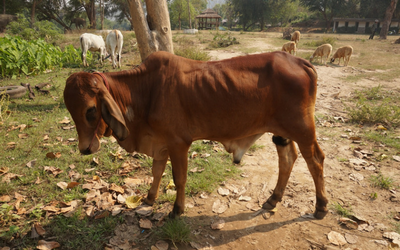
In April 1863, Professor John Gamgee initiated a meeting of veterinarians and professors of veterinary medicine from all over Europe. This conference attracted 103 veterinary professionals from 10 countries. Professor Gamgee initiated this meeting to discuss ways to fight epizootic disease (outbreaks of animal disease), and establish rules for importing/exporting cattle. This marked the first meeting of the International Veterinary Congress, which later became The World Veterinary Association (WVA).
A lot has changed over the past 155 years!
Today, the WVA represents over 500,000 veterinarians from around the world and holds meetings to exchange ideas, share experiences, and promote and develop veterinary medicine. The mission of WVA is “To assure and promote animal health and welfare and public health globally, through developing and advancing veterinary medicine, the veterinary profession as well as public and private veterinary services.”
Food security, food safety, animal welfare, and disease prevention (human and animal) have become a global concern with a global economy, making international partnership key. In order to meet the needs of our global society, the WVA partners with other international associations (e.g., The World Medical Association, The World Health Organization, and The Food and Agriculture Organization).
When you hear the word “veterinarian” the image that comes to mind is likely the veterinarian at your local clinic, and you may think that the work they do is limited to caring for community pets. This is not the case. They are likely engaged in the global veterinary community by being a member of a national or international association under the WVA.
You may have heard the term One Health Initiative. This is a worldwide strategy for expanding the collaboration between physicians, veterinarians, dentists, doctors, nurses, and other health care professionals, as well environmental related disciplines. Human health is linked to animal health and environmental health. One Health is dedicated to improve the lives of all species by integrating human medicine, veterinary medicine, and environmental science. A few examples of how veterinarians work under One Health are outlined below.
Veterinarians collect information and data which is then shared with the veterinary community. Their contribution to national and international veterinary medicine is vital in keeping animals, the environment, and humans healthy. Think of the current outbreaks of Canine Influenza Virus in North America. Without the dedicated work of veterinarians collecting and sharing information, steps to stop the spread of this infection would not occur.
Many veterinarians work for various global organizations that ensure food safety for human consumption. It is the job of veterinarians to inspect animals in the food production process. And it’s not just the “food to fork” in major cities and towns… think of the global rural areas where animals are essential for access to food and income. By preventing and controlling disease in these rural areas around the globe, veterinarians play an important part in improving the lives of the people and animals that live there.
World Veterinary Day was created by the WVA to celebrate the veterinary profession. Each year a theme for the event is chosen to promote animal health, which is tied to human health. This year’s theme is “The role of the Veterinary Profession in Sustainable Development to improve livelihoods, food security, and safety”. The next time you see your veterinarian, remember to say a big “Thank You!” – not only for caring for your furry or feathered friend, but for contributing to the global health of animals, humans, and the environment!